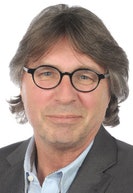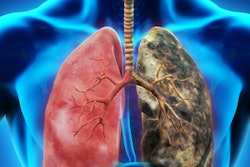
The x-ray regulation forum is a long-established feature of the German Radiology Congress (Deutscher Röntgenkongress, RöKo 2017), which takes place at the Congress Center in Leipzig from 24 to 27 May. This year's forum, the 22nd of its kind, will discuss Germany's first Radiological Protection Act. In the first interview, Horst Lenzen, who is head of medical physics at the Institute of Clinical Radiology at Muenster University Hospital and is chair of the forum, discusses the issues involved. In the second interview, Dr. Otmar D. Wiestler from the University of Heidelberg shares his latest thoughts on cancer imaging.
The Bundestag (the lower house of Germany's national parliament) is planning to pass Germany's first Radiological Protection Act this year. Why now and not earlier?
Lenzen: The European Union (EU) actually published its new basic standard in December 2013. The Radiological Protection Directive was designed to combine lots of individual directives and reflect the latest knowledge in this area. But EU directives can't always be incorporated into national law on a one-for-one basis. They involve a complex legislative process, and the Federal Cabinet referred the bill to the Bundestag for consultation in February 2017. We're expecting it to be passed this summer, but there won't be any immediate changes in radiology because it probably won't come into force until 2018.
 Horst Lenzen from Muenster.
Horst Lenzen from Muenster.How will the law affect medical physics and radiology?
As with any new law, there'll be lots of small changes. The key ones are the introduction of individual screening, compulsory overdose notification, and the involvement of medical physics experts in x-ray diagnostics. So far, mammograms have been the only permitted screening technique, but the act will allow for future expansion.
On the other hand, compulsory overdose reporting could place an additional burden on individual practices and clinics. In the future, medical physicists will have to be available to carry out improvements in the fields of CT and interventions, which is a major challenge, as we need to train a sufficient number of young specialists over the coming years. The introduction of the new 20-mSv annual limit for the lens of the eye will also cause significant problems and expense for some intervention departments.
Who will be on the podium at this year's radiology regulation forum?
We've invited experts from many different areas. German radiology will be represented by Dr. Dierk Vorwerk (president of the German Radiological Society, DRG, Deutsche Röntgengesellschaft) and the chair of the professional association, Dr. Detlef Wujciak. We also have Dr. Andrea Bock of the Federal Ministry for the Environment, Nature Conservation, Building and Nuclear Safety, who was instrumental in drafting the act, and the Federal Office of Radiation Protection will be represented by Dr. Jürgen Griebel.
One innovation this year is that each topic will begin with a short presentation, in this case by one of the section heads at the ministry, Dr. Birgit Keller. This year's team of moderators will also be a lot younger. Dr. Jürgen Westhof from Kassel, chair of the States' Committee Radiological Regulation Working Party, will be there for the first time and as an insider he's not afraid of raising difficult questions.
Can people at the forum help to shape the law?
The bill is already complete, and it's been passed by the government, but the much more detailed implementing provisions will be added over the coming months. They most certainly can be influenced, and if people express strong opinions at the forum, the legislators may very well take them into account. So as we do every year, we're encouraging the audience to make their views heard to the powers that be.
Interview 2: Intelligent fusion
Dr. Otmar D. Wiestler is president of the Helmholtz-Gemeinschaft (Hermann von Helmholtz Association of German Research Centers) and the keynote speaker on the opening day of RöKo 2017. In this interview, he discusses cancer facilities in Germany.
What do you see as the challenges to future cooperation between cancer centers and universities?
 Dr. Otmar Wiestler from Heidelberg.
Dr. Otmar Wiestler from Heidelberg.Wiestler: The biggest challenge lies in intelligently fusing translational and clinical research so that they're mutually beneficial. This is the only way to establish innovative, high-level cancer treatment and achieve our future objectives in such areas as data-based research and personalized medicine. We also need to work together to train a new generation of oncology experts and translational researchers.
What's the role of radiology in all of this?
It will play a key role in these centers because the process requires a cross-disciplinary approach. It includes such things as personalized diagnosis and monitoring within treatment plans and studies. Radiology also makes an important contribution to interdisciplinary tumor boards.
The centers, and the German Translational Cancer Research Consortium (DKTK), also have a vital part to play in developing new molecular and other imaging procedures, and in image-guided radiotherapy. New forms of interventional radiology also have significant potential for oncology treatment and research.
What should be the main purpose of expanding cancer centers over the coming years?
The primary aim of expanding the National Centre for Tumour Diseases and oncology centers of excellence is to provide all the facets of a comprehensive cancer facility. This includes combining innovative medicine with state-of-the-art treatment and effective translational cancer research at the laboratory-clinic interface.
The DKTK has set itself the goal of driving personalized cancer medicine and maintaining an ongoing portfolio of innovative studies.
Joint platform technologies such as high-throughput genome sequencing will also be used as a basis for patient stratification. The DKTK has three sites providing proton- and heavy-ion-based particle therapy, so it has a lot of potential in terms of radio-oncology. And all cancer centers have a key outreach role, ensuring that new and established oncology concepts are widely used.
Editor's note: This is an edited version of a translation of two short articles published in German online by the German Radiological Society (DRG, Deutsche Röntgengesellschaft). Translation by Syntacta Translation & Interpreting. To read the original articles, click here.



















